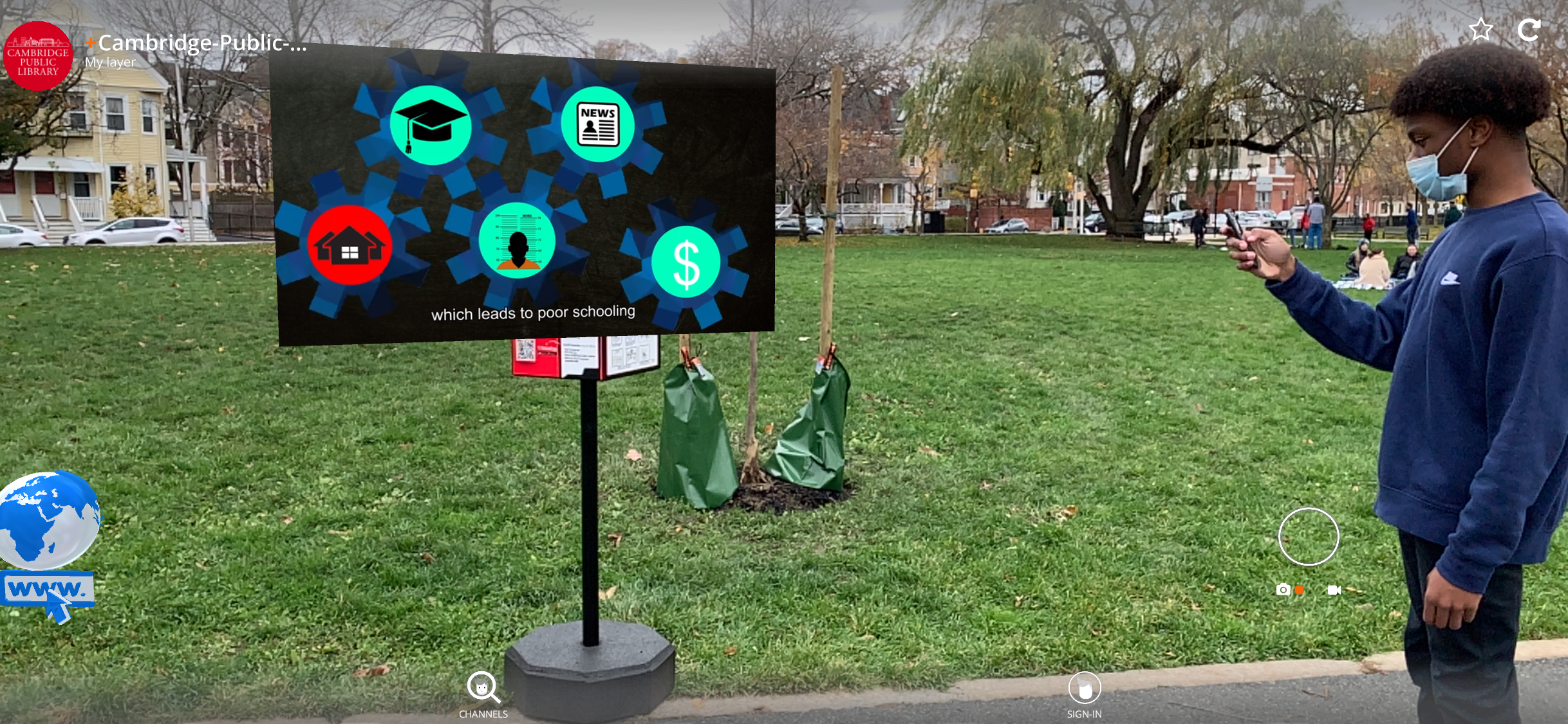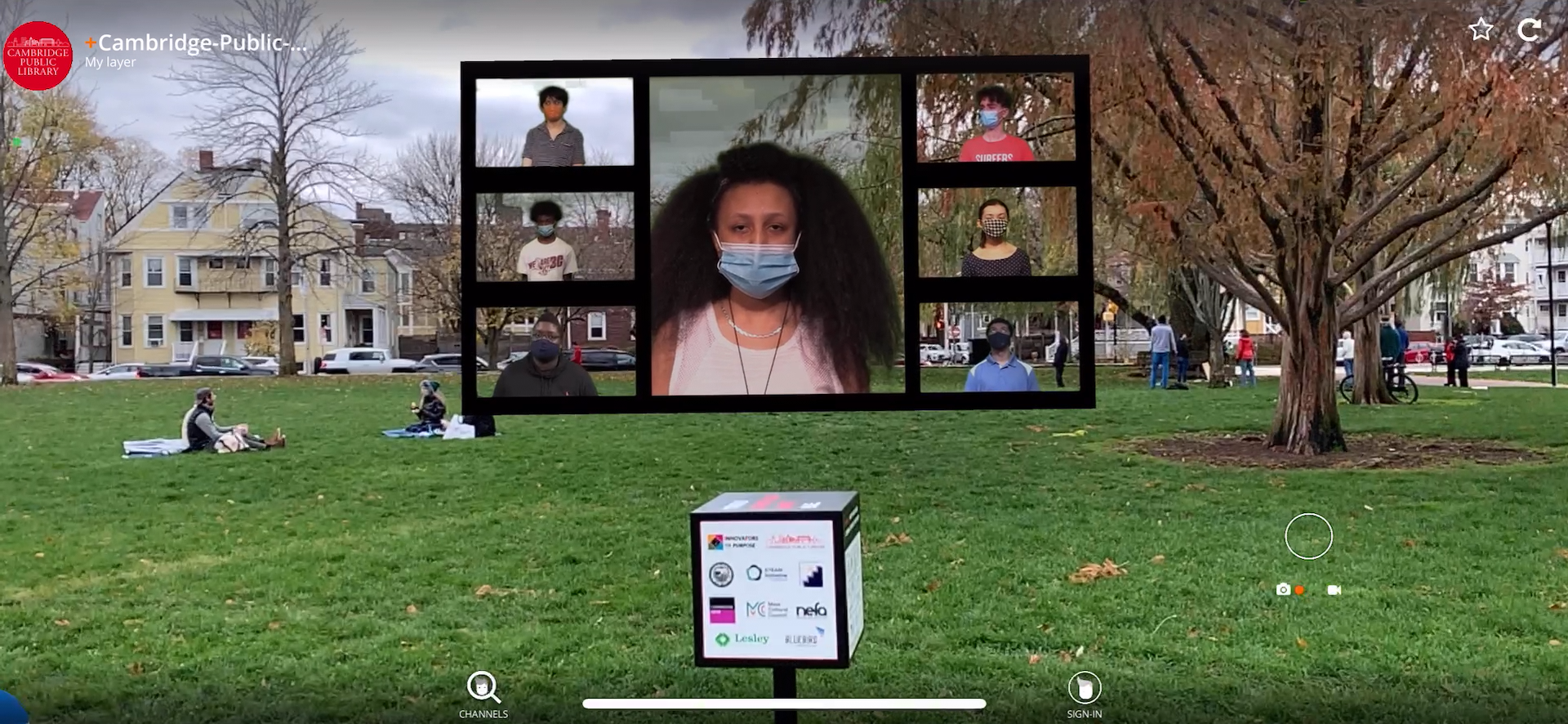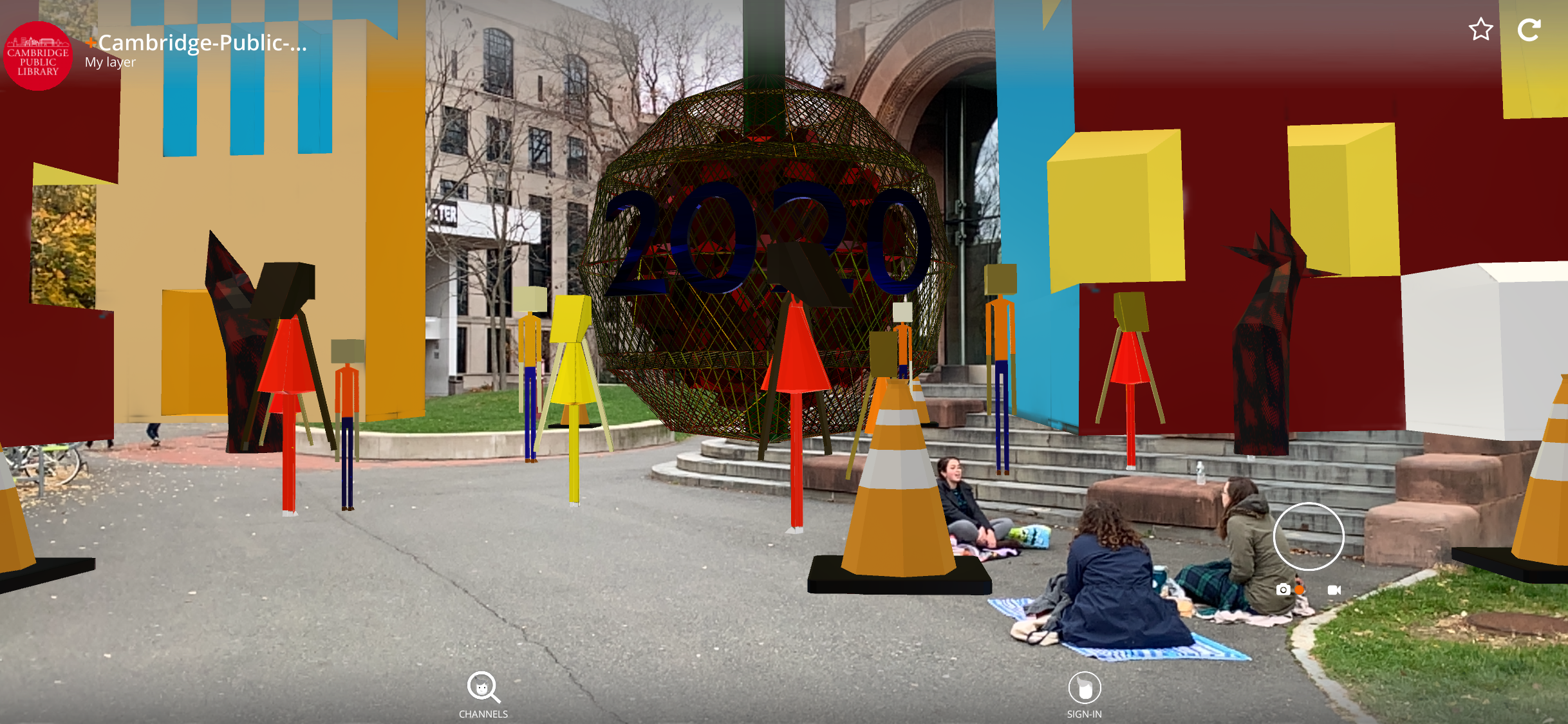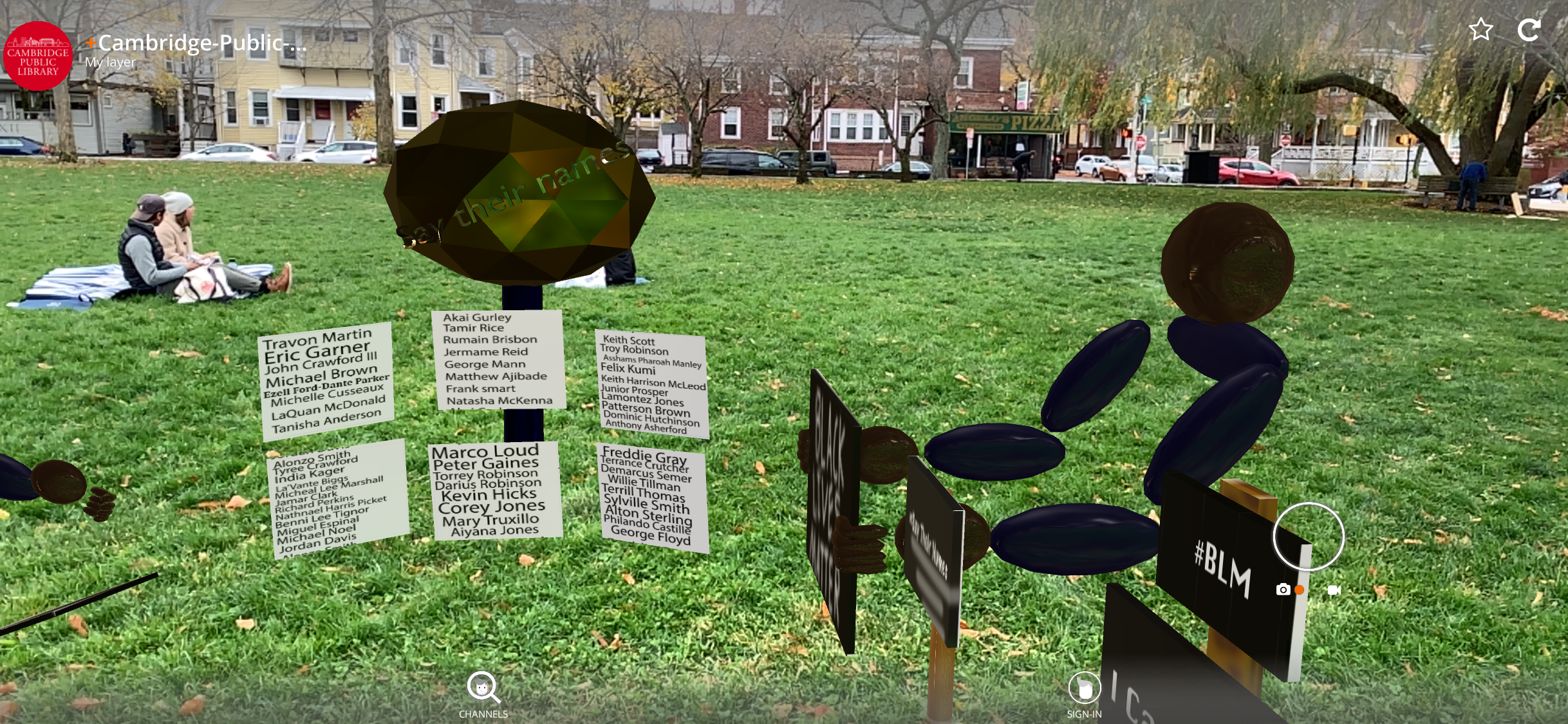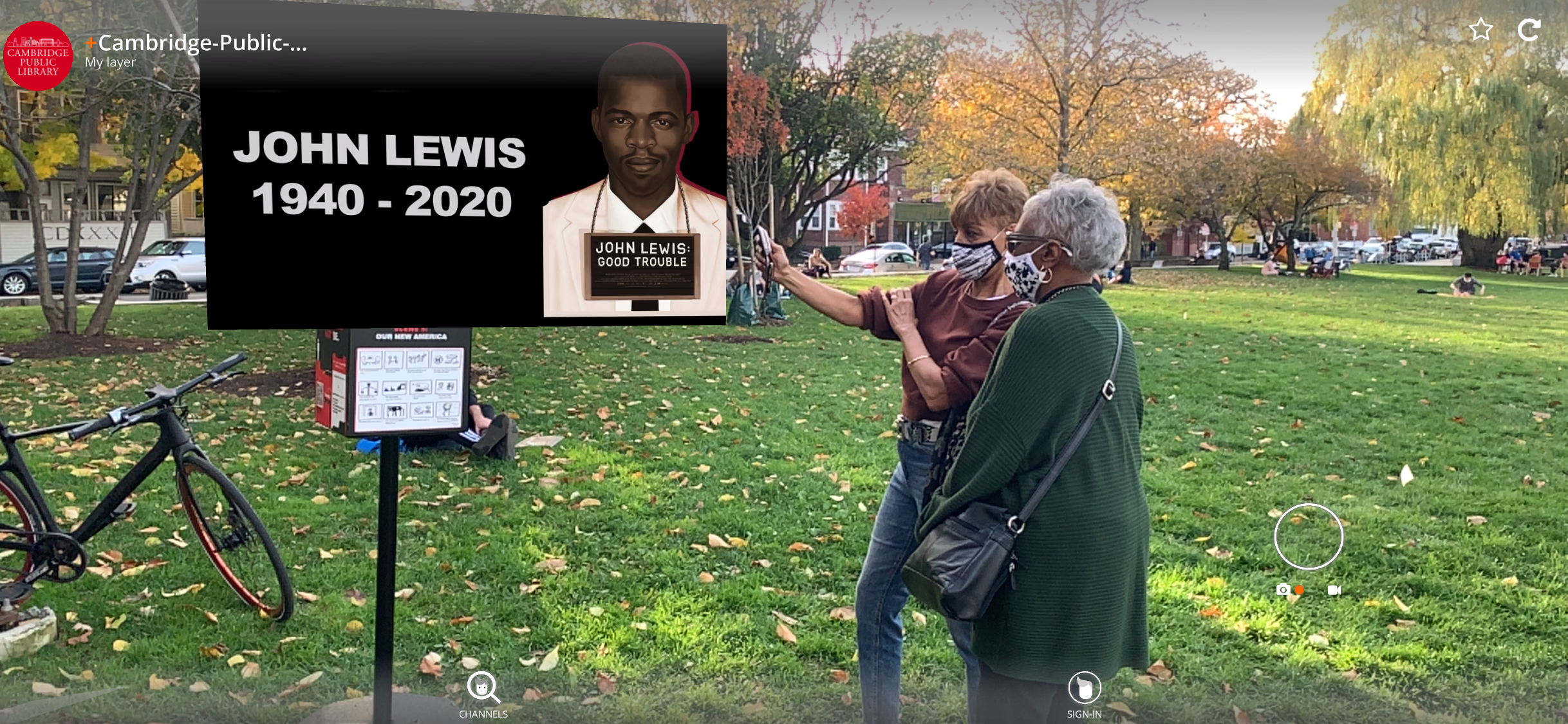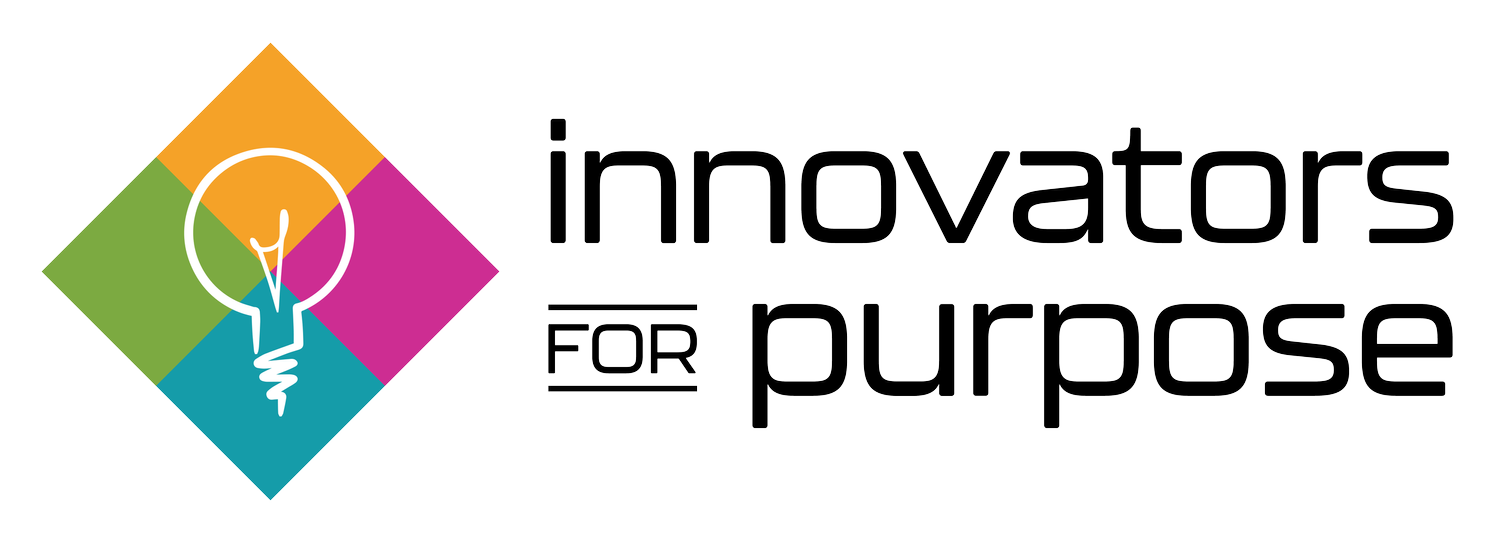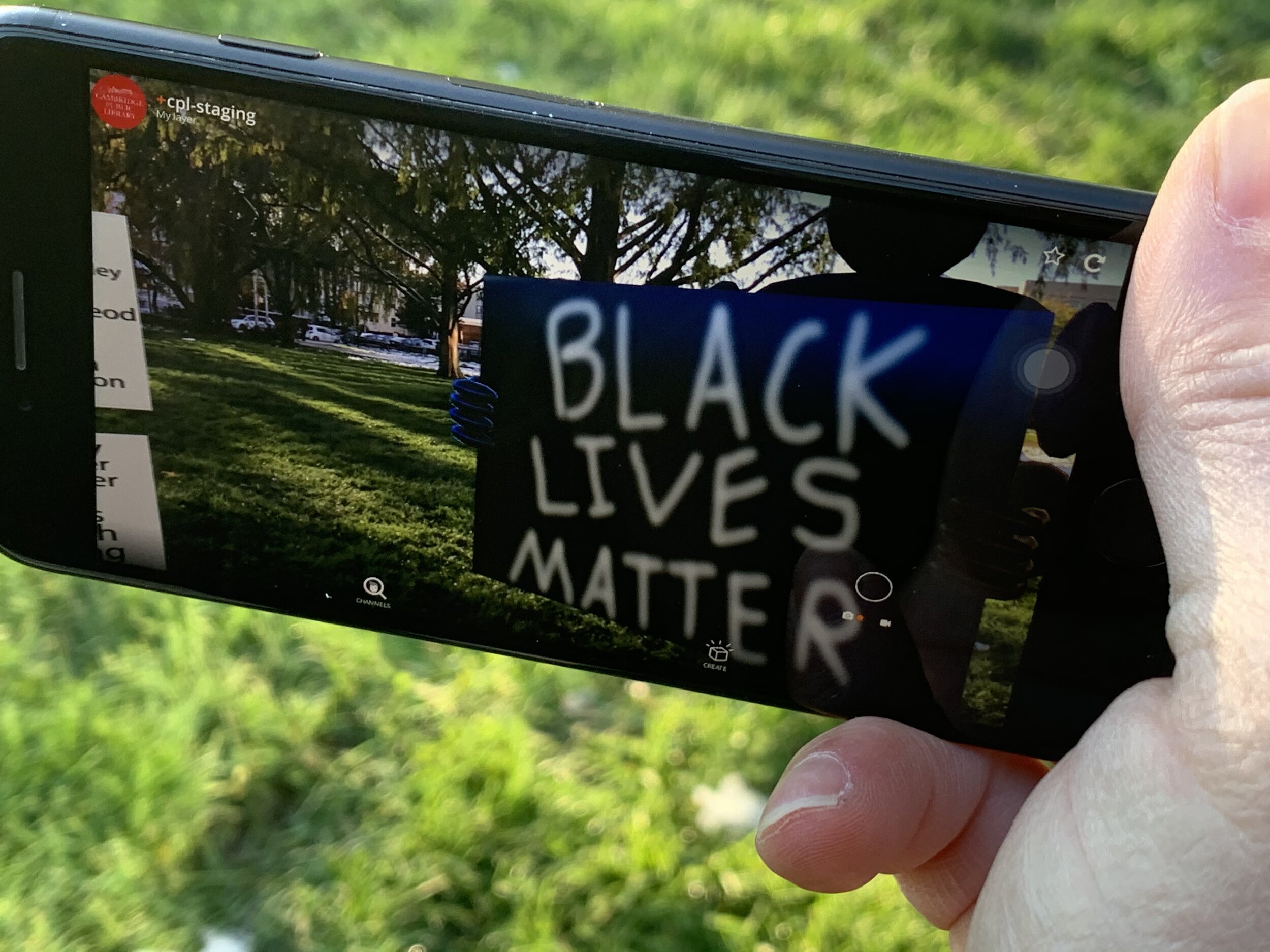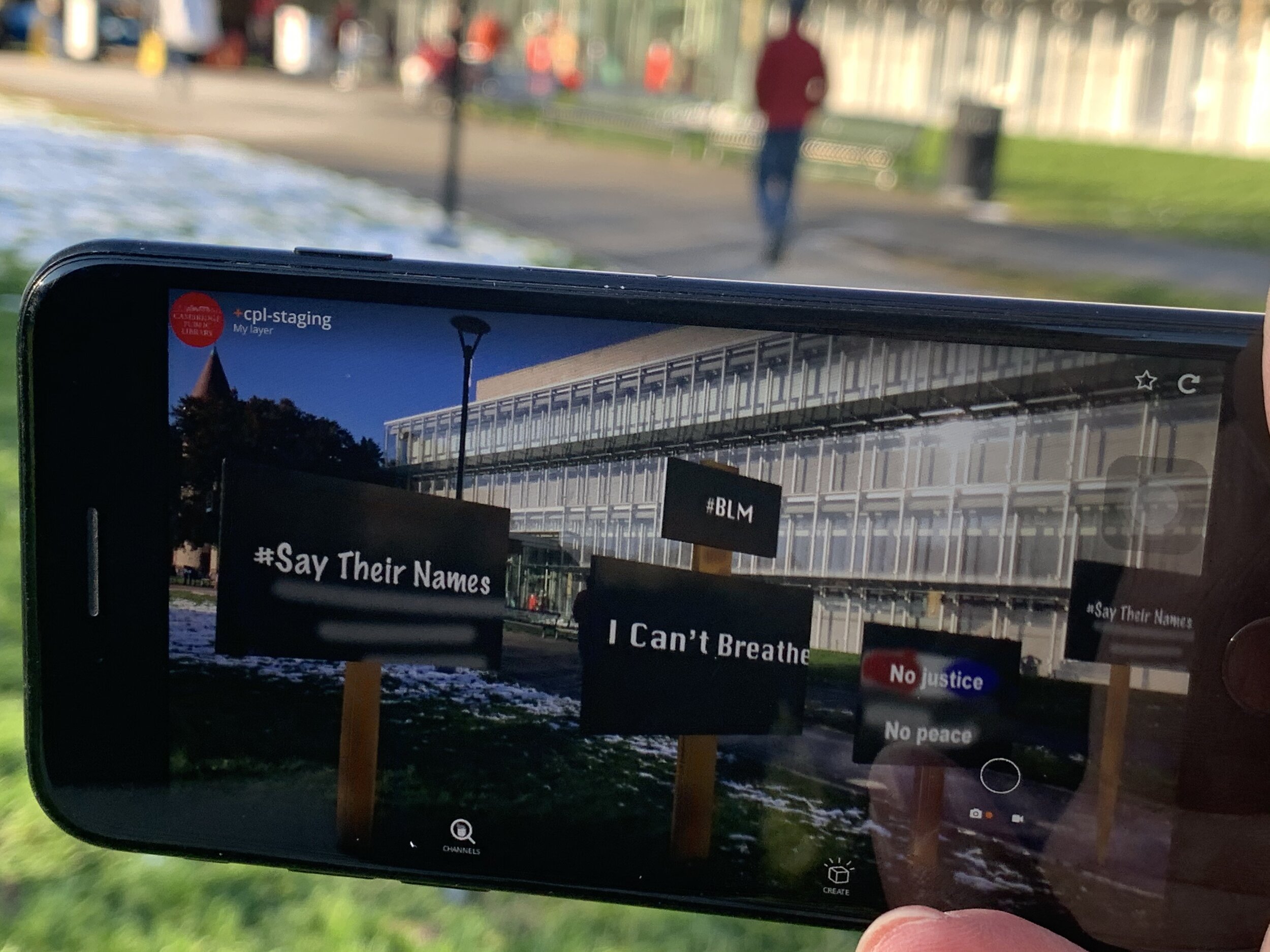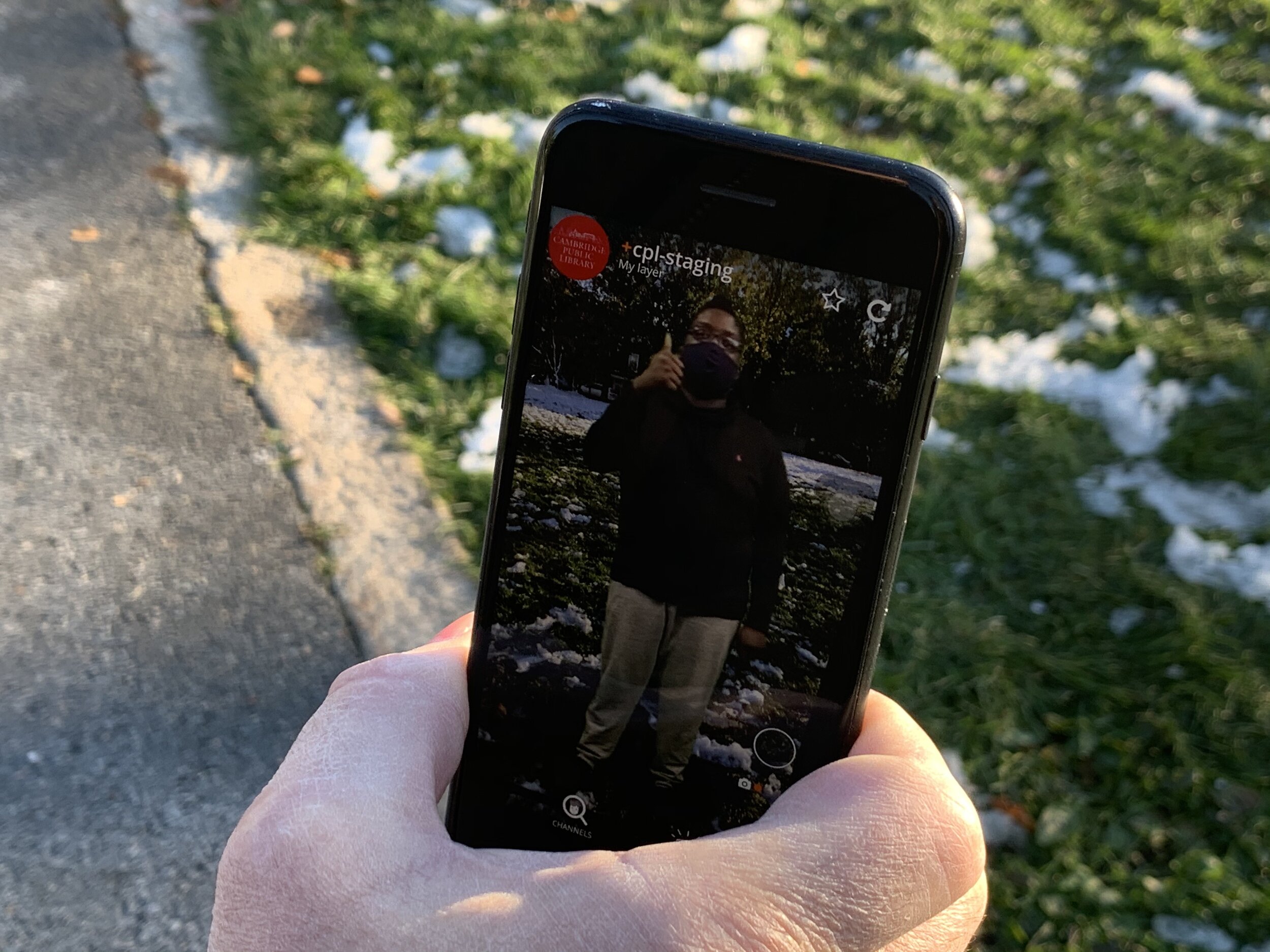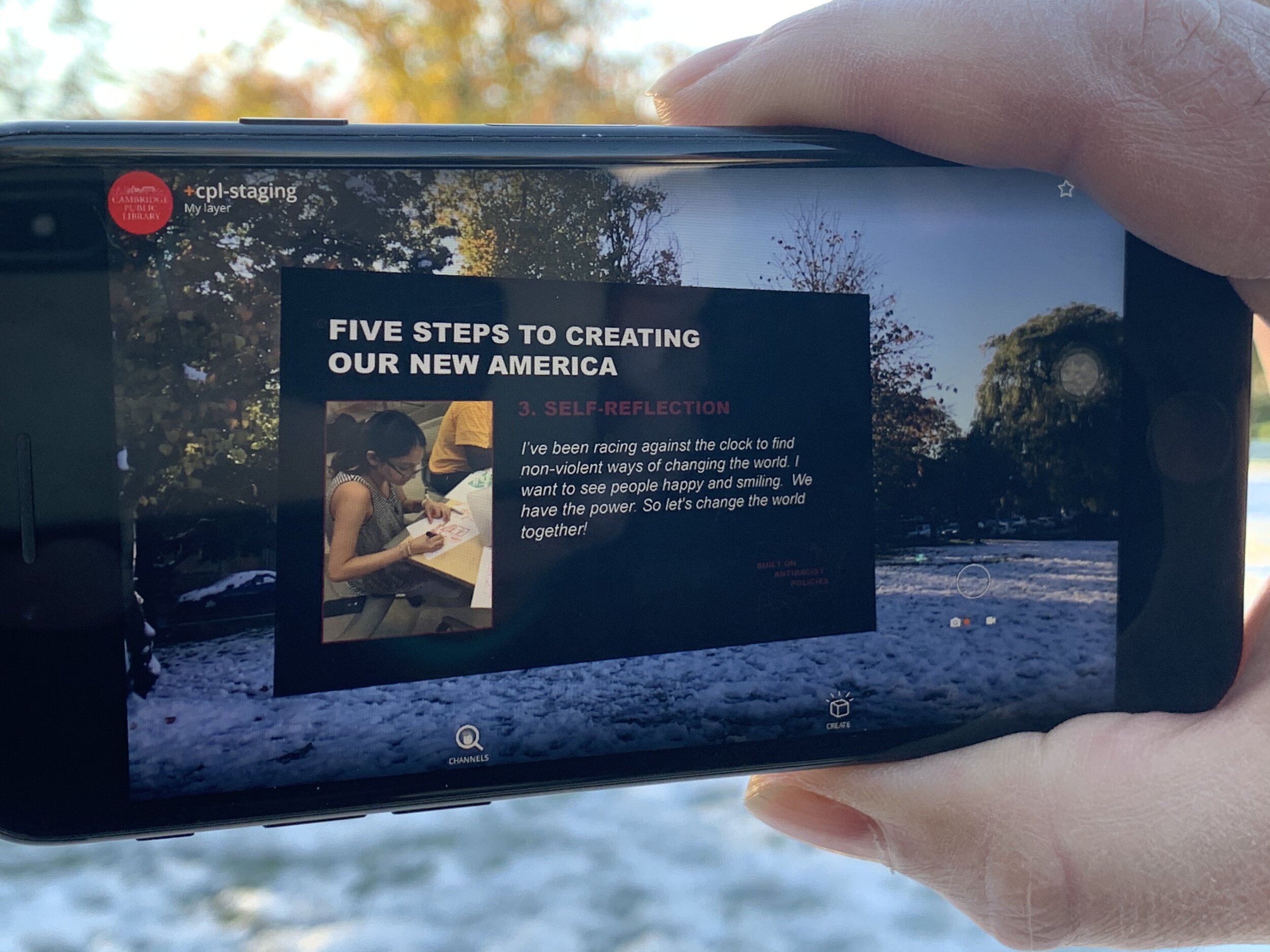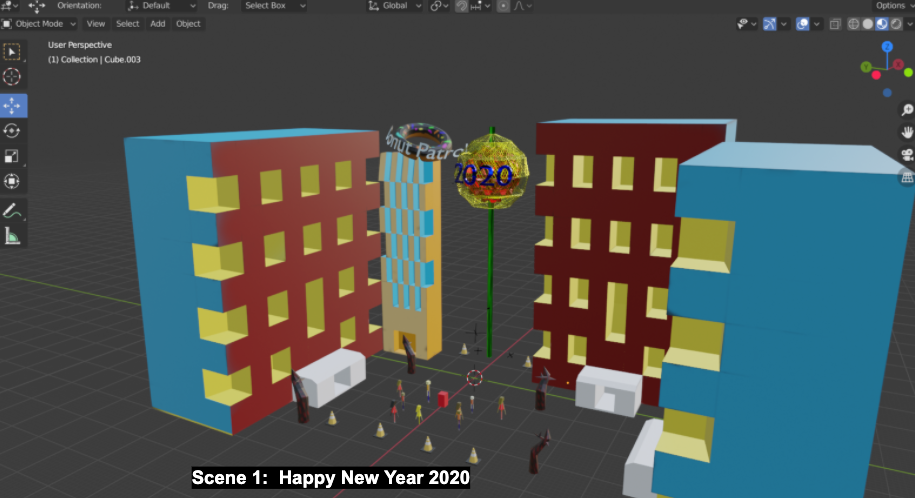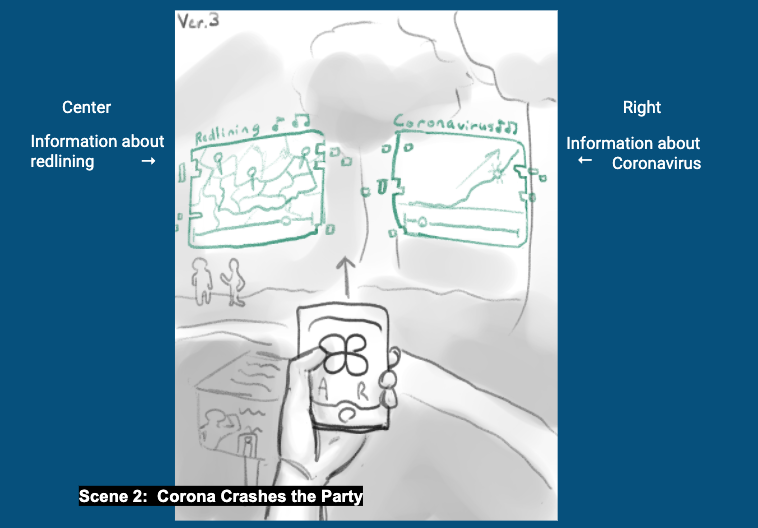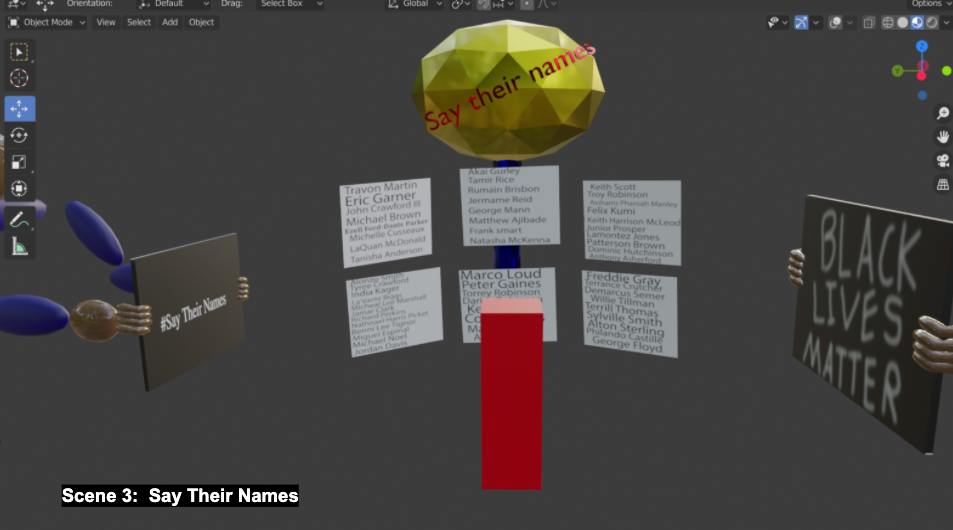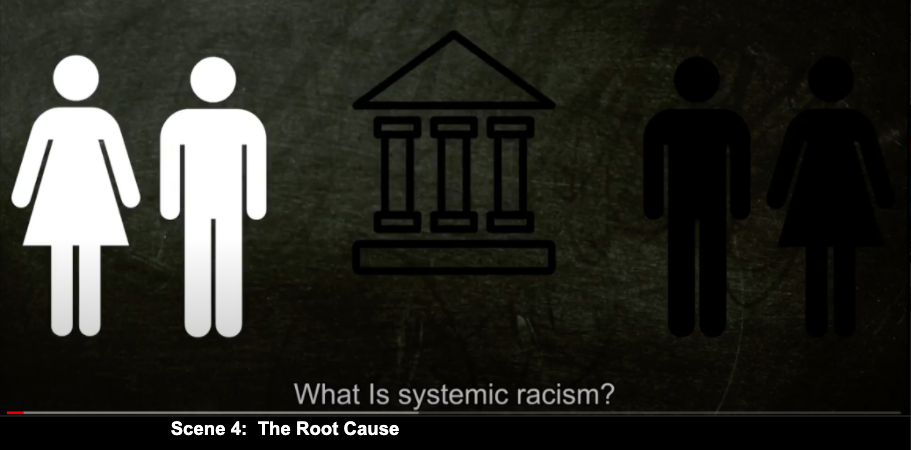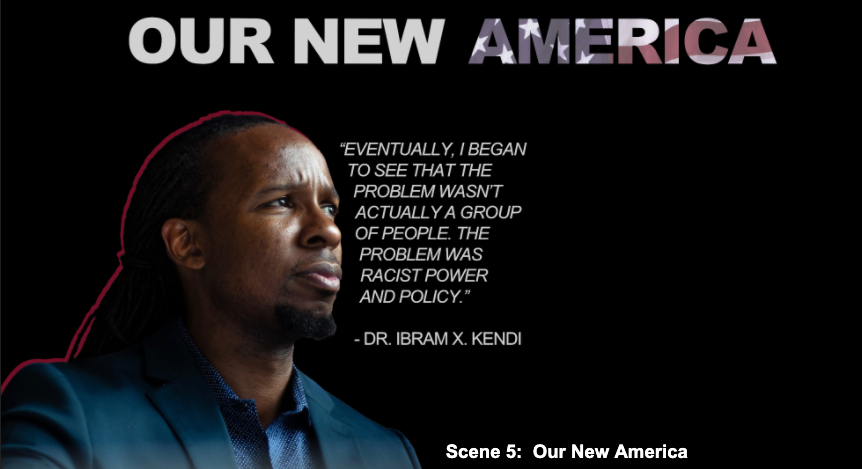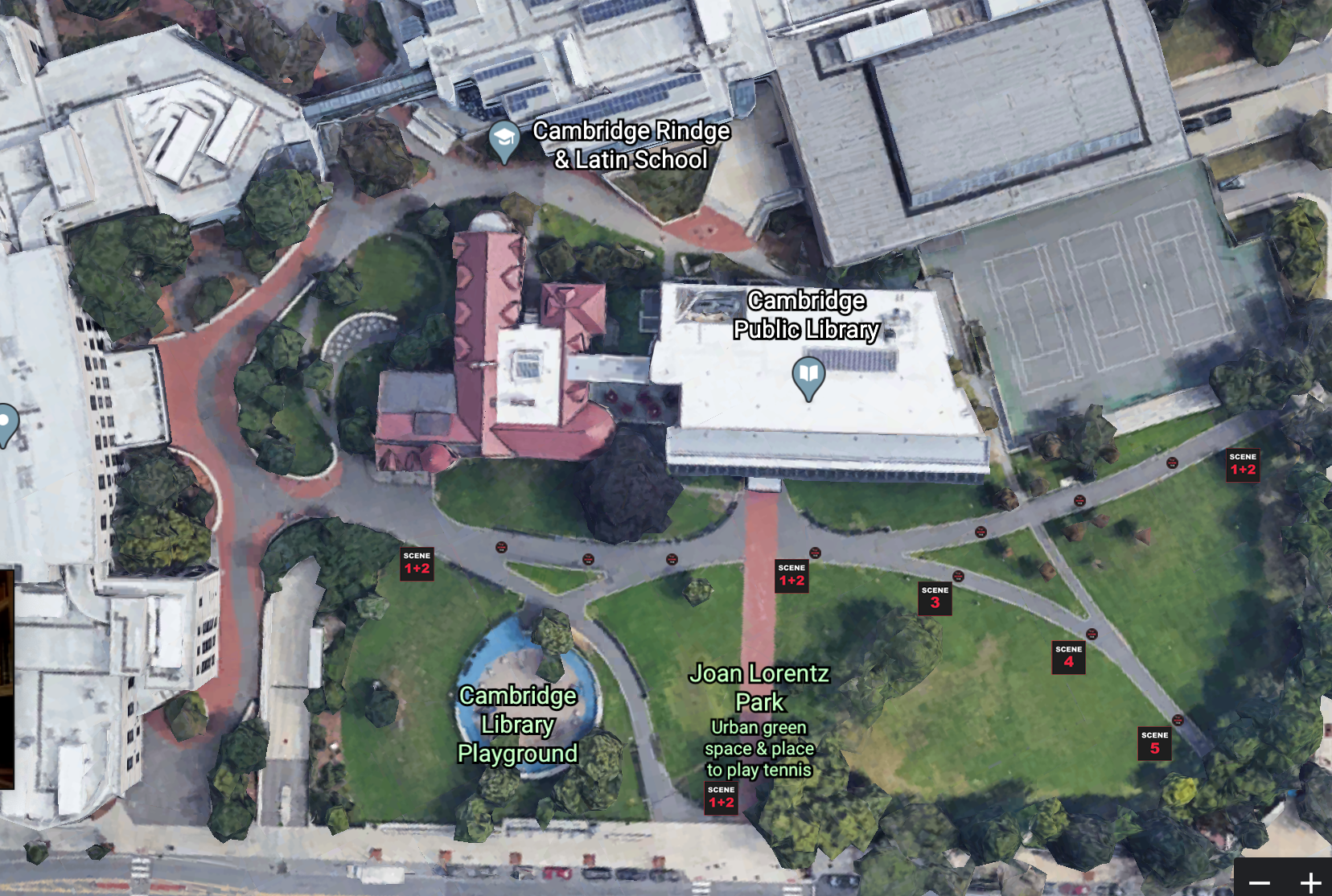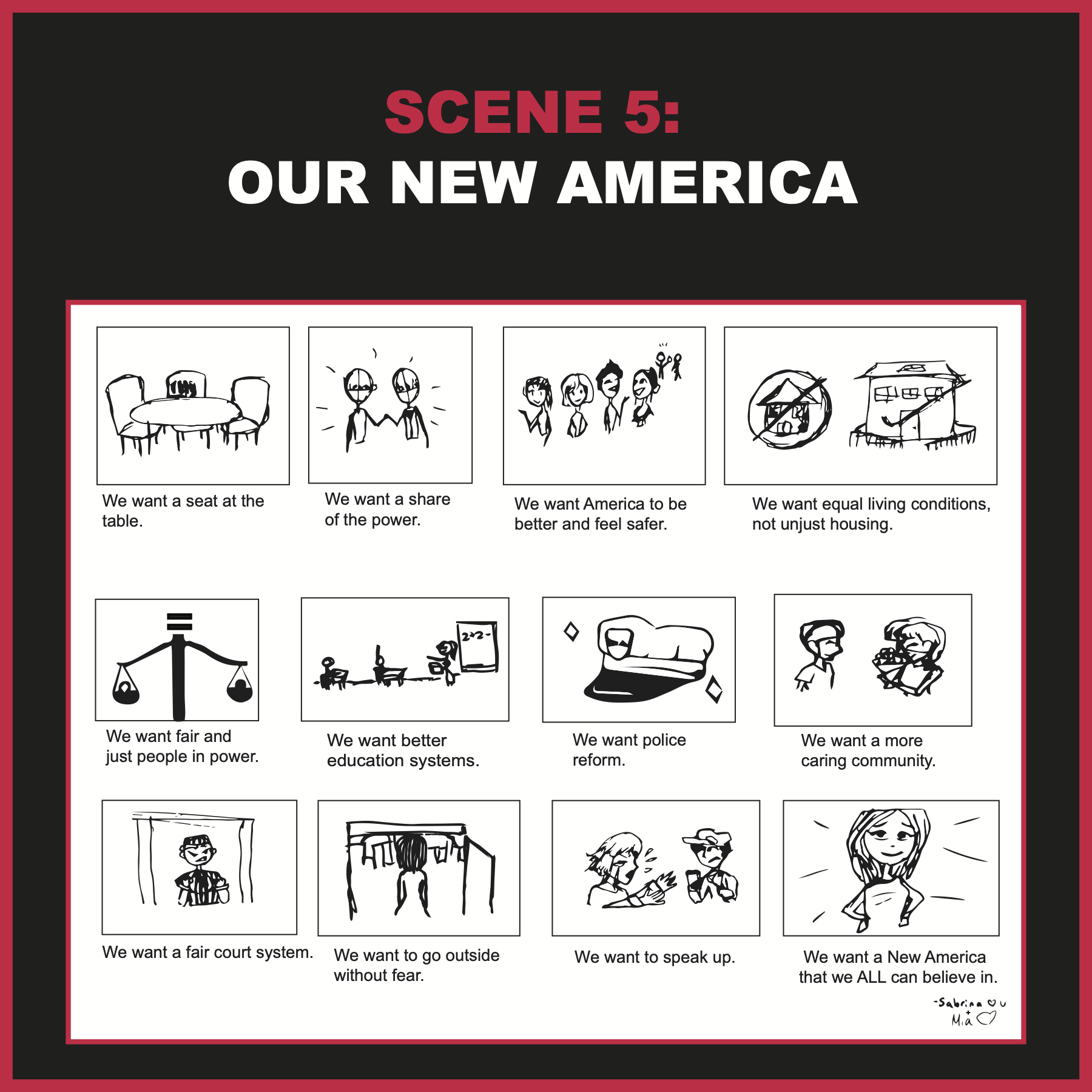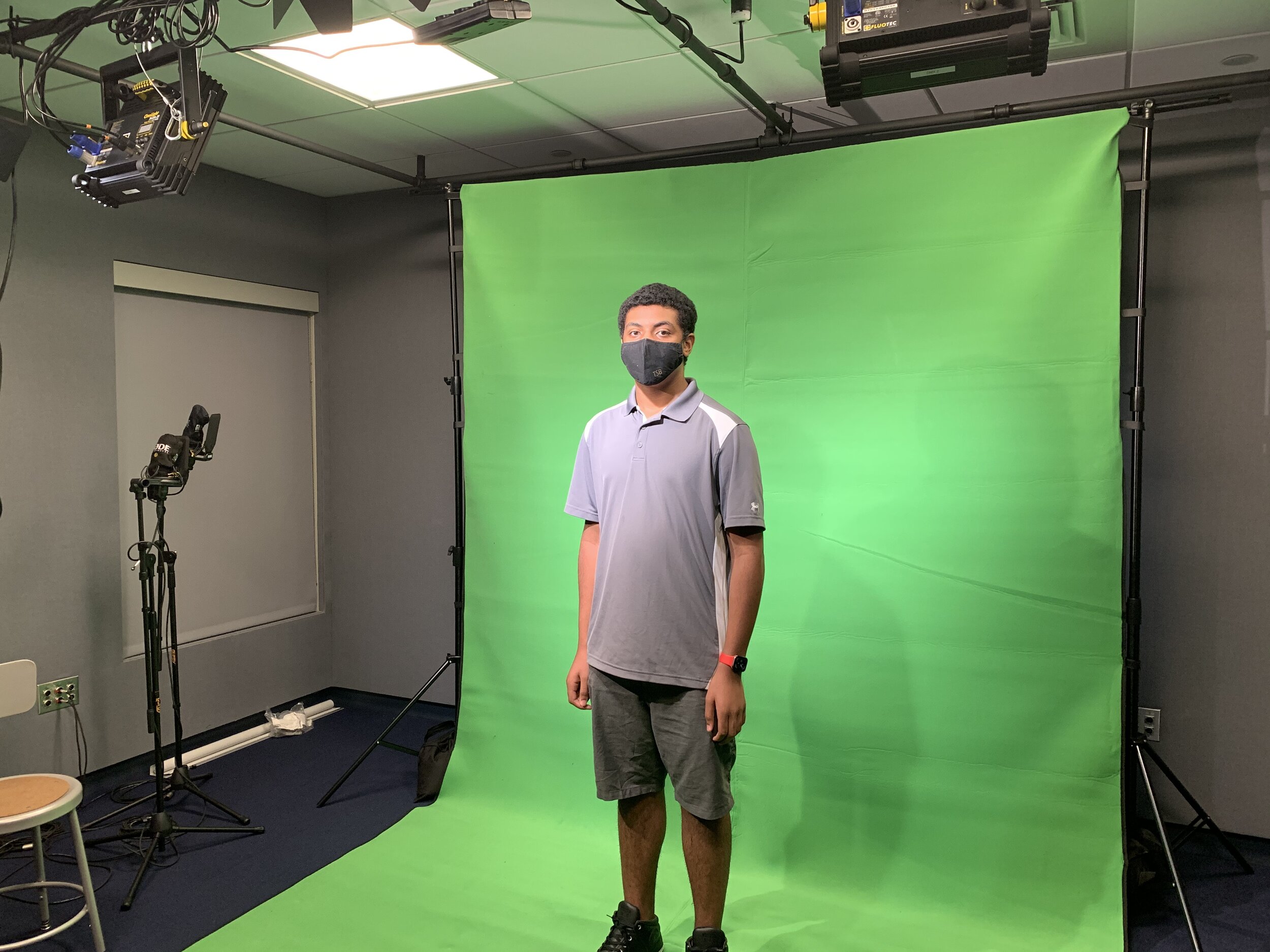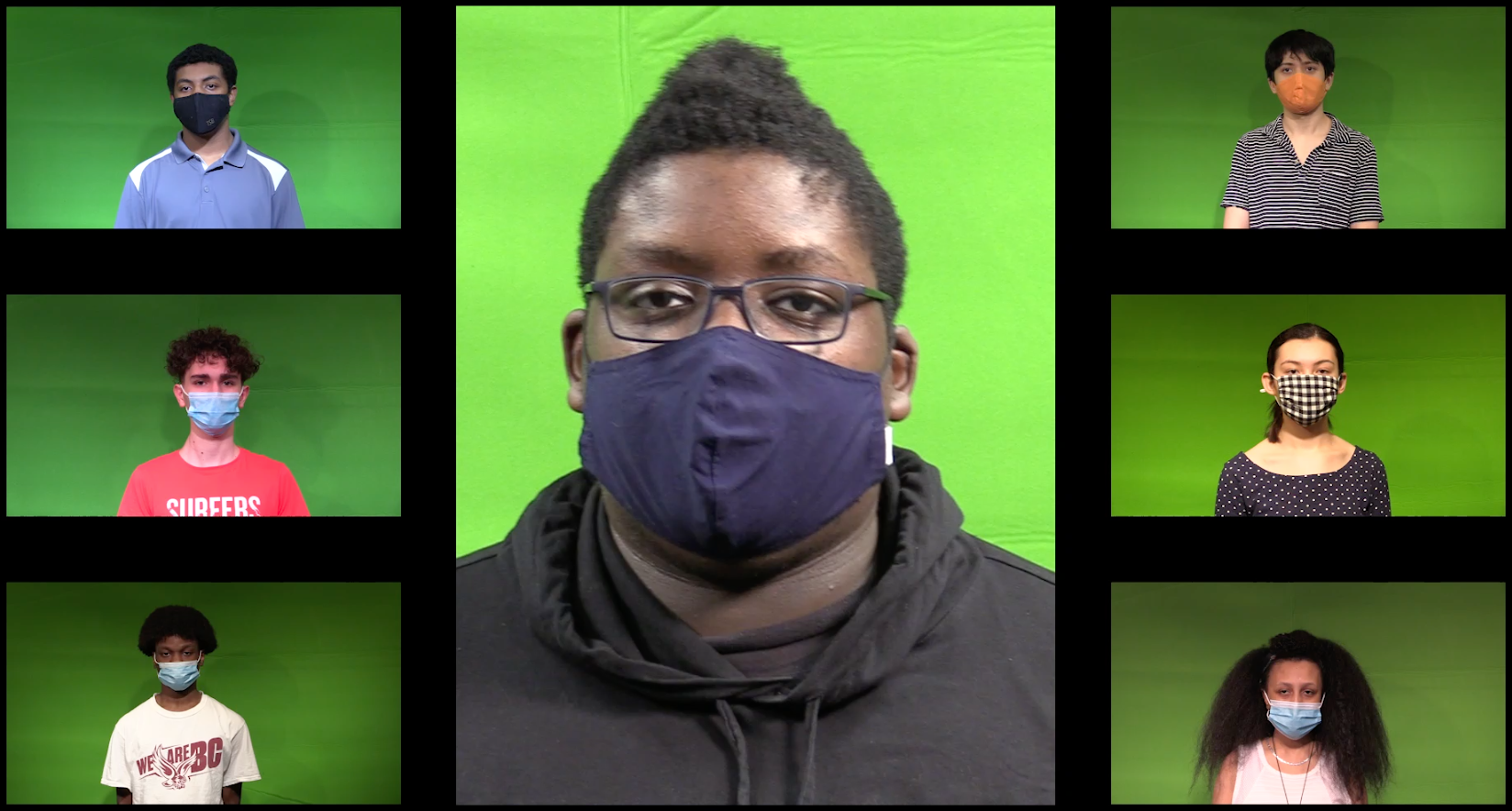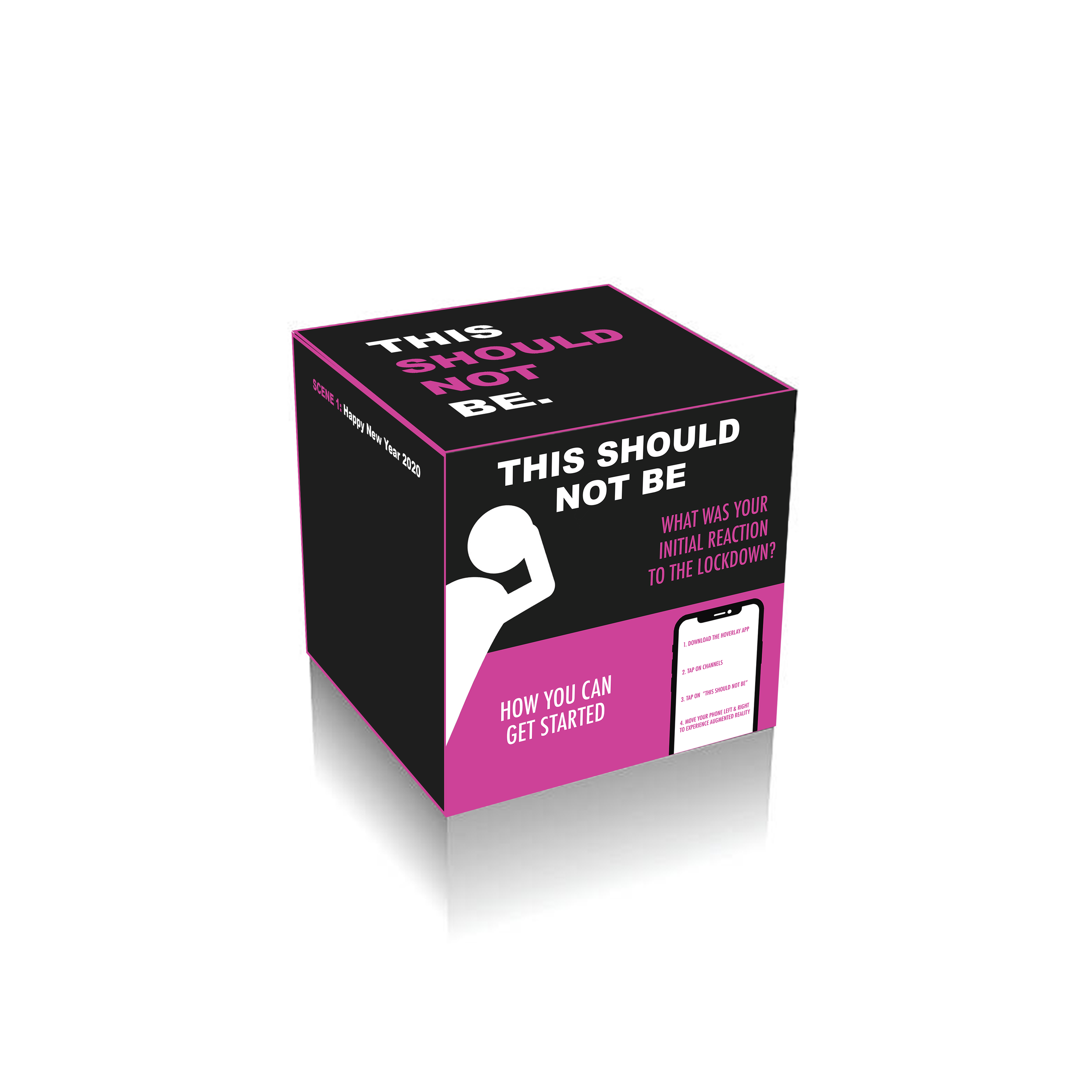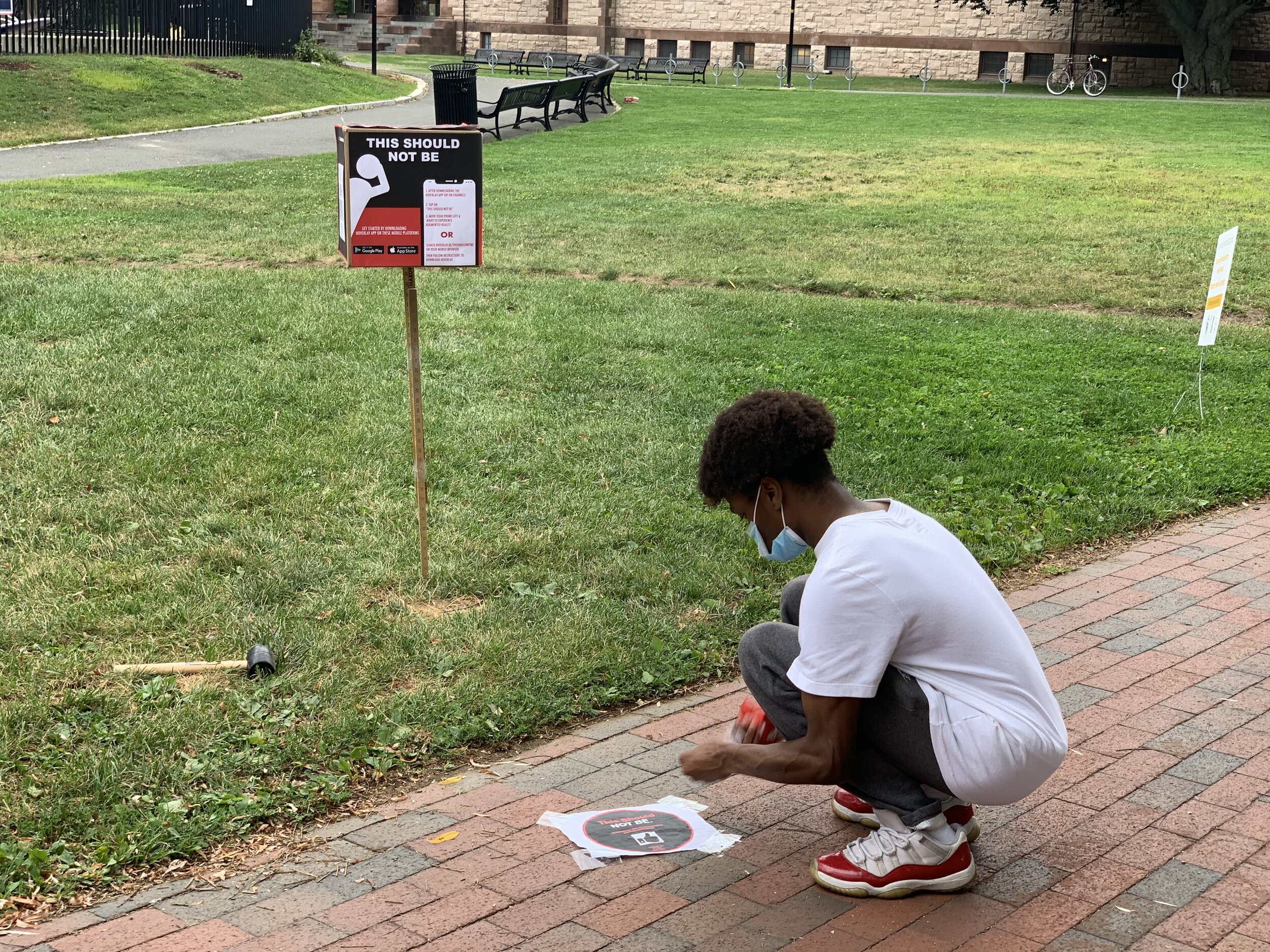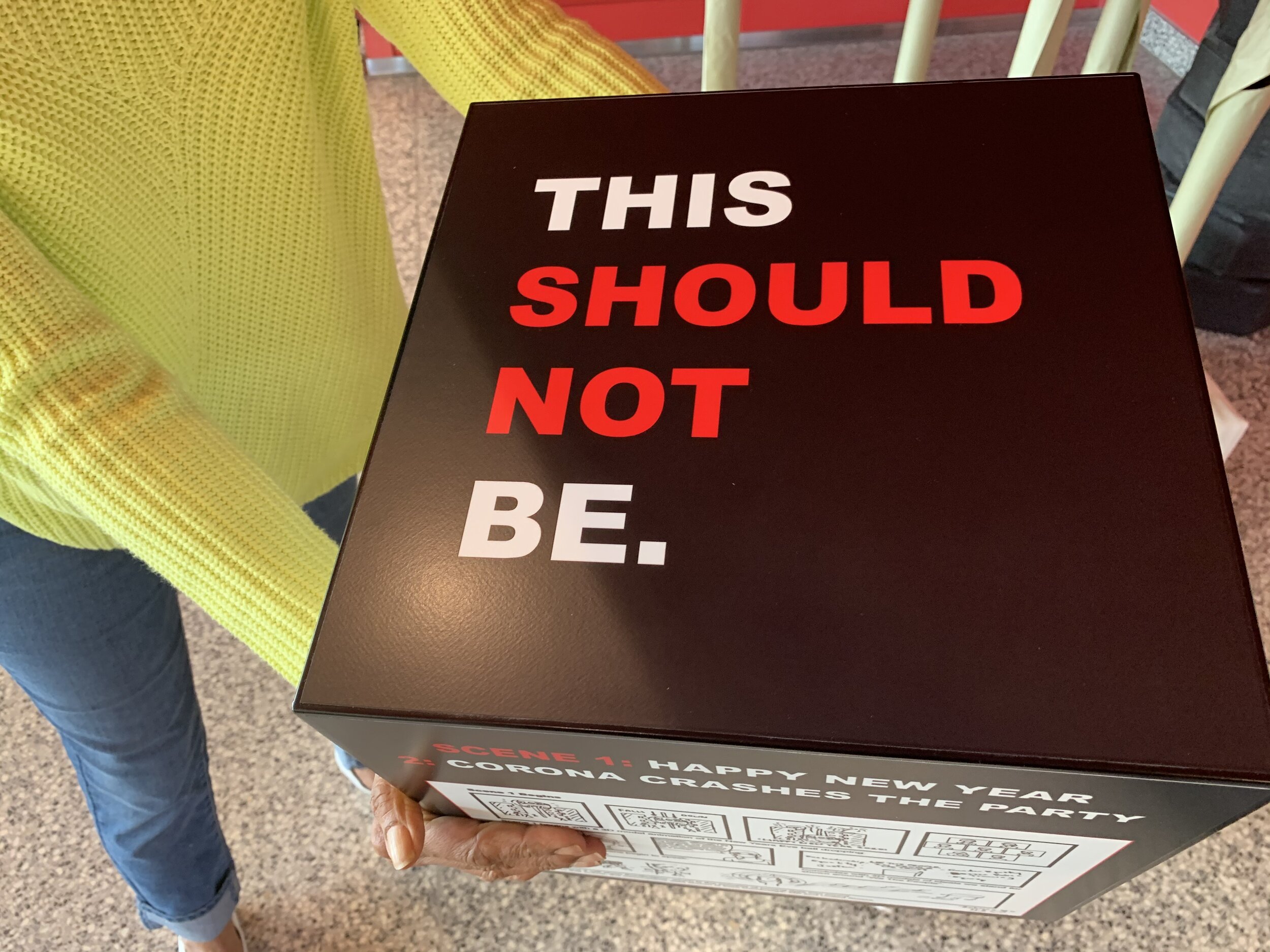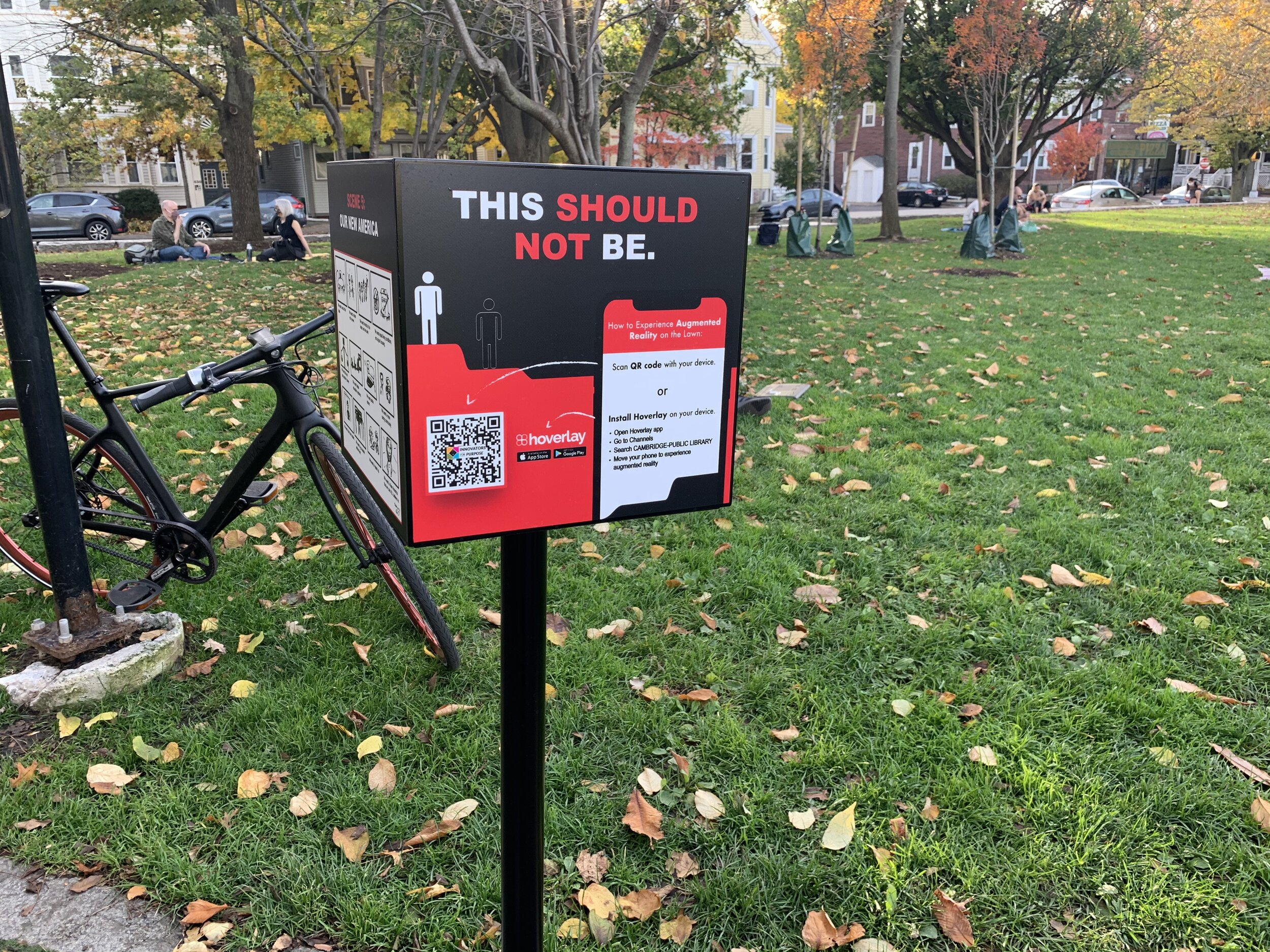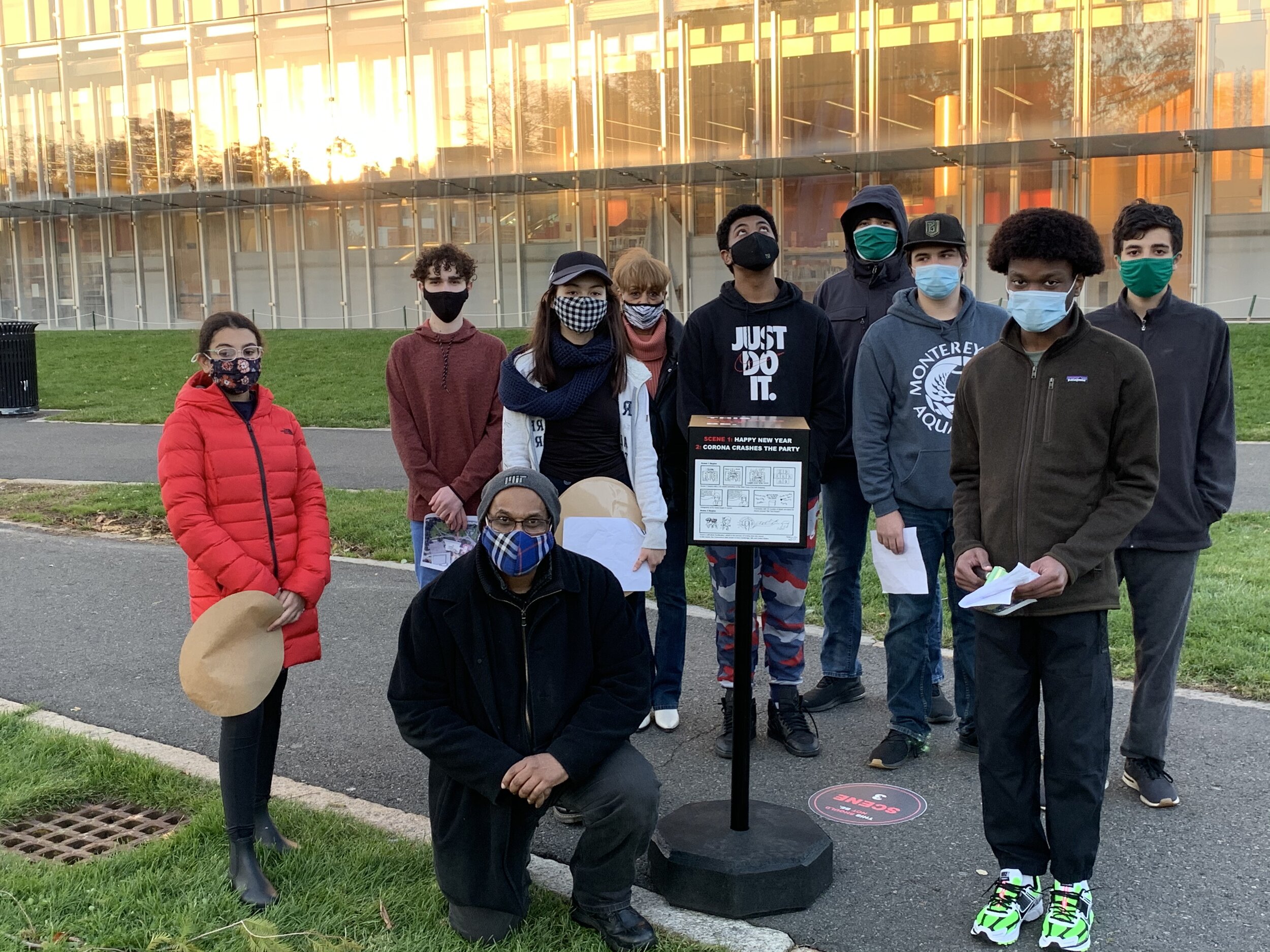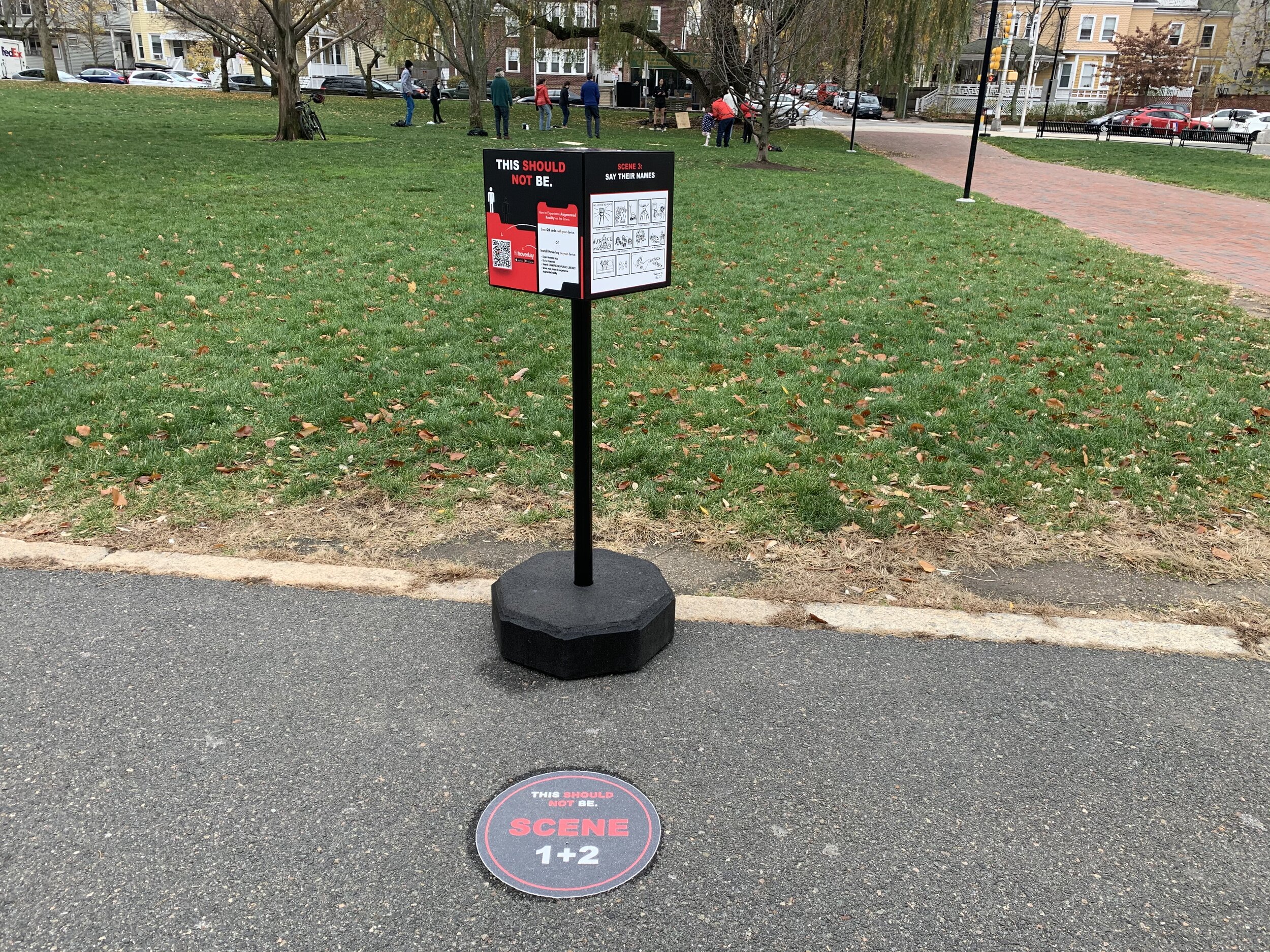
This Should Not Be.
-> From Fear to Action
DESIGNED BY: IFP TEEN CREATIVES 2020
LOCATION: CAMBRIDGE PUBLIC LIBRARY 449 BROADWAY
IN PARTNERSHIP WITH: CAMBRIDGE PUBLIC LIBRARY & CITY OF CAMBRIDGE
INSTALLATION DATE: NOVEMBER 2020 - MAY 2022
THE Challenge
How Might We Awaken People to the Injustices in Our Society and Inspire them to Help Us Create a World that We ALL Can Believe In?
THE OUTCOME
An amazing groundbreaking Augmented Reality experience installed on the highly trafficked Cambridge Public Library’s lawn. iFp Teen Creatives use their voice and ingenuity to speak out against systemic racism and provide a roadmap to a more equitable society.
The IMPACT
Increased awareness of systemic racism and actions needed to create an America we all can believe in. Over 1,500 interactions with AR content while on CPL’s lawn from November 2020 - May 2022. Has been converted into a traveling exhibit that’s currently touring Cambridge Public Schools.
Overview
Inspired by the tragic murder of George Floyd, iFp Teen Creatives channeled their fears and chose to use their creative voice to make a difference. The resulting groundbreaking augmented-reality experience This Should Not Be. addresses the dual pandemics of 2020 - COVID-19 and systemic racism. It concludes with their visions of an America we all can believe in.
Origin Story: This Should Not Be.
On May 25th 2020, a police officer decided that George Floyd’s life didn’t matter. The officer pressed his knee on Floyd’s neck for 8 minutes and 46 seconds - appearing to dare anyone to stop him. This time everything was captured on video. The turmoil that erupted afterwards seemed to finally acknowledge that Black Lives Matter.
The following Monday at 3:30pm as usual, we met with our students. Instead of jumping into our projects, we began talking about George Floyd. The students were visibly upset over what they were seeing on the news and social media. Comments like my heart dropped, this is affecting my mental health and I’m afraid - circulated our Zoom session. Corona was no longer the big issue.
As the discussion wrapped up, we offered two solutions. We could remain afraid and hope it will all pass. Or we could channel our fears and use our talents to attempt to make a difference. The team chose the latter.
The idea of creating a storytelling platform had been percolating for over a year. More recently we were doing some interesting work with augmented reality. A few days after the conversation with our Teens, we shared an idea with our partners at the Cambridge Public Library. The Teens would create an augmented reality storytelling installation on the Library’s lawn. The installation would allow our young people to use their creativity and voice on a matter of most importance to them. In record time, we received the green light from the Library. The resulting project employs a cutting edge storytelling approach that addresses the following question:
“How Might We Awaken People to the Injustices in Our Society and Inspire Them to Help Us Create a New America that We ALL can Believe In?”
Our Process
In iFp Studios, teens work collaboratively with designers, technologists, makers and other professionals to bring new-to-the-world ideas to life. The resulting products and experiences are cutting-edge with a youth inspired vibe. This team was composed of 13 teens, 3 design mentors & 2 project leads - 7 teens have been with iFp more than 1 year and 4 for more than 3 years. The pandemic inserted Zoom into our process. It impacted our productivity, but not as much as one would think. The Teens deep understanding of the iFp Way allowed them to achieve much more than imagined.
Our Integrated Creative Problem Solving (iCps) framework underlies all of our work. Students start with ethnographic research tools to understand the problem being solved. Tools include primary research tools such as observations, surveys and interviews as well as secondary research from archives, libraries and of course Google support primary research. Depending on the project, students may also be immersed into problem through simulations and experiments.
Systemic Racism is by far the most complex topic we have ever attempted to cover. A significant amount of our Research & Discovery activities was spent reading, writing and reflecting on the work of social justice warriors such as Dr. Ibram X. Kendi who is radically reframing the discussion on systemic racism, corporate socially conscience companies like Ben & Jerry’s (who knew?) and many others. Our storytelling game also had to be raised several levels.
Story Arc
This Should Not Be. is composed of 5 scenes spread across the Cambridge Public Library’s lawn. We used a framework called the Story of Self, Story of Us and Story of Now to tell their story. Former President Barack Obama used this framework in his keynote speech at the 2004 Democratic National Convention when he famously said “there are not red states or blue states, we are the United States of America.”
The Story of Self are stories that can be shared so that others will “get you.”
The Story of Us highlights values, experiences or aspirations we share as a community.
Story of Now is an urgent challenge to take action on.
In our story,
Scene 1 starts with the hope and excitement for a new decade.
Corona crashes the party jamming our hopes and dreams into Zoom boxes (Scene 2).
In Scene 3, George Floyd’s murder pushes corona to the back pages and exposes any post-racial thoughts.
iFp Teens discuss systemic racism and vows to get into some “Good Trouble while tackling it (Scene 4).
Scene 5 discusses the action needed to create a New America we all can believe in.
Embedded Design Reviews
Integral to our process is outside feedback. Over the course of the Summer, 3 design reviews were conducted. Over 50 guests attended including people from industry (IDEO, Microsoft, Richard Lewis Media Group), academia (MIT, Lesley University Art+Design), library staff, community members, parents and others.
Dual outputs
This project required managing two outputs simultaneously:
The story had to invoke an emotional response
The visitors’ experience had to be pleasing and easy to navigate
After the first design review, a reviewer noted that we had some problems with the visitors’ experience. The layout was not aligned with the most likely walking pattern of the visitors. The initial layout would force all visitors to start at the same point. Some would, others wouldn’t. This would definitely impact overall response sought. We also had an accessibility problem. Non-smartphone visitors would not be able to experience the installation.
The team came up with two very elegant solutions. Visitors at all entrances of the lawn will have the option of viewing scenes 1 and 2. Then everyone will be funneled into scenes 3, 4 and 5. This will ensure visitors receive the experience in a meaningful way. For non-smartphone visitors, we decided to go with a cube shaped informational signs. The additional faces will allow storyboards illustrating the story being told at each station. Thus, simply by reading the signs non-smartphones visitors will gain an understanding of the experience.
The Rest of the Story
If the complexity of the subject matter wasn’t enough - students were stretched further technically than ever. The project incorporated augmented reality, sonification (making meaning of data with sound), data visualization, 3D animation, 2D graphics, human centered design and more. This project in every dimension was off the charts.
Ground Breaking AR Experience
“For the first time, a Public Space hosts a digital overlay, not created by professionals, but directly by members of the community - teens nonetheless, to share their vision about social issues.”

